After spending time in the Middle East and enjoying street food falafel wraps, I had to learn how to make my own homemade falafel. But I am not calling this a traditional falafel recipe, but it was developed after reading many traditional recipes. My version is made with only dry chickpeas. In some places they use fava beans or a mixture of chickpeas and fava beans. Since it’s easier for most people to find chickpeas, and I want this to be an easy falafel recipe, I went with just chickpeas. This may not be the world’s best falafel, but I really like it, and it’s gout-friendly and accidentally vegan.
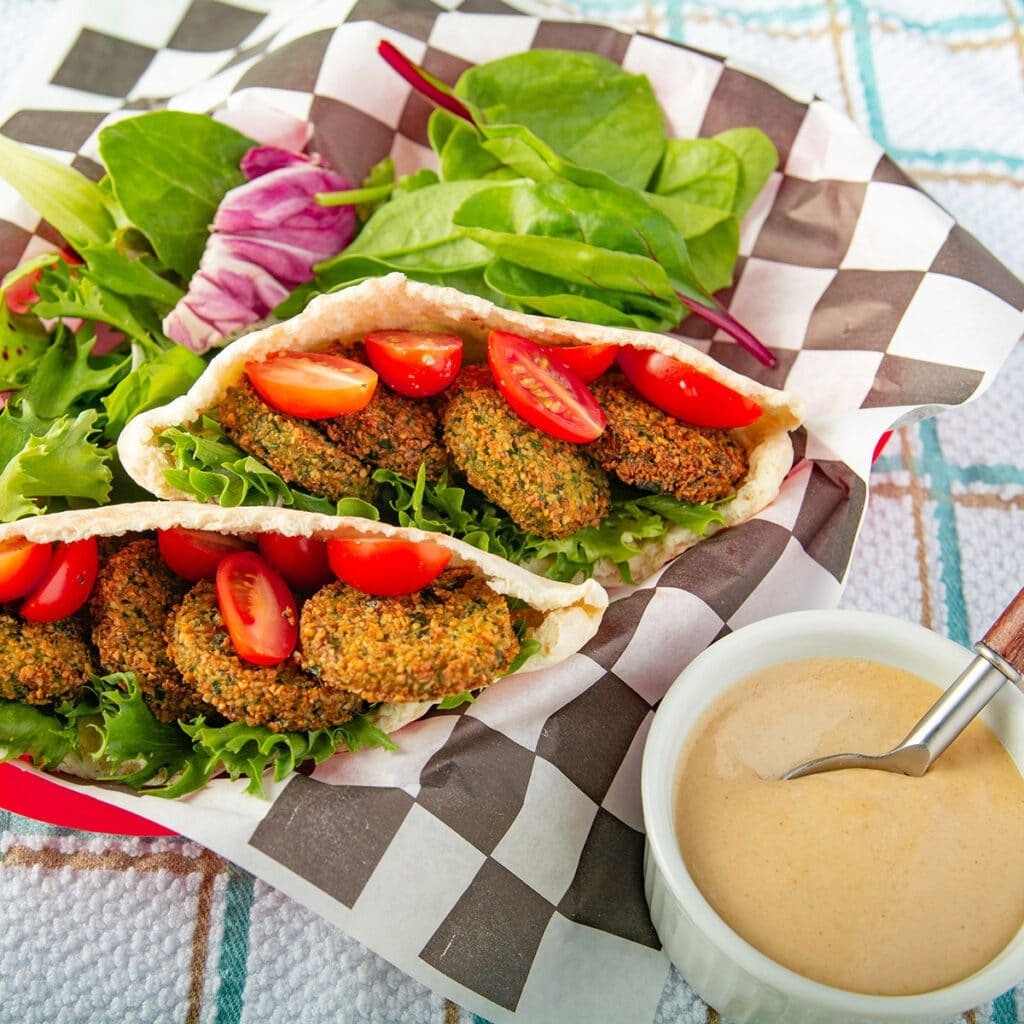
When I first started researching what foods I could eat with gout, dried beans were listed as a food group to avoid. But research is starting to show that beans eaten in moderation are an important source of protein. Beans are also high in fiber and antioxidants. As humans, we need to eat protein, and plant-based proteins are safer for gout suffers than meat-based protein. For more information on purine-rich foods.
Health-wise, the one downside is that this version is made by deep-frying the chickpea mixture. In the future, I will post a baked version, and a version made using an air fryer. Whereas these methods are not the traditional way to cook falafel, the falafel patties will contain a lot less oil than the deep fryer.
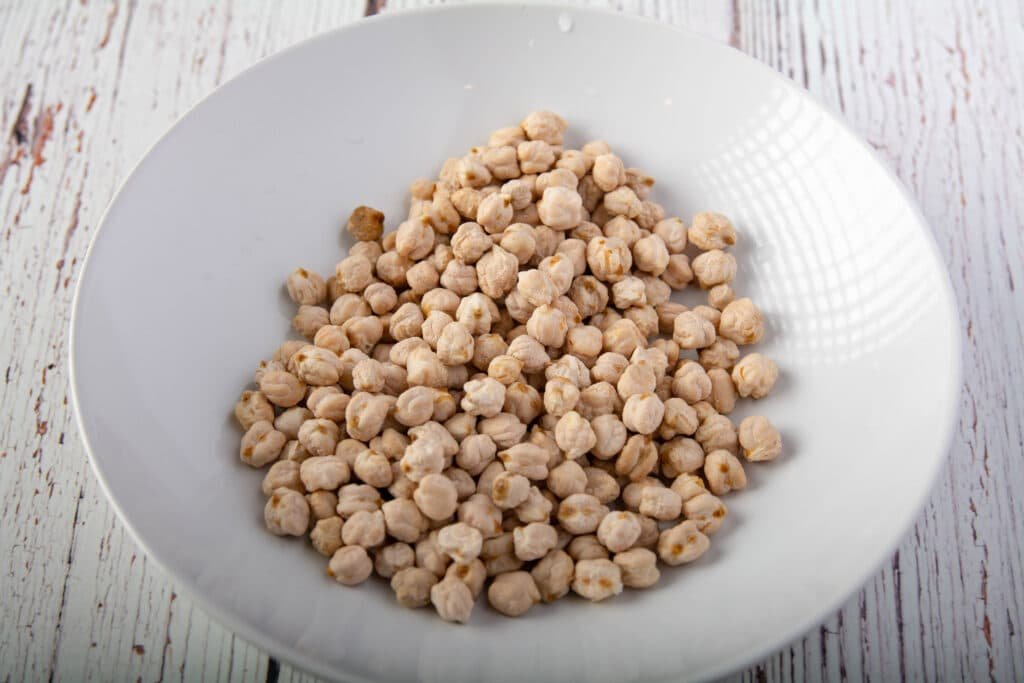
To start with, we need one cup of dried chickpeas or garbanzo beans. Sort out any ugly ones like the black one at the top of the picture and give them a rinse. Please place them in a large bowl quite a bit larger than the chickpeas and cover with cold water. The water should cover by at least three-quarters of an inch. Let them soak at least eight hours, but twelve is better.

Our Ingredients:
Half a bunch of flat-leaf parsley. You can also use cilantro, but if you use cilantro, cut back on how much parsley you use by an equal amount. Give your leafy vegetables a rough chop before adding them to the food processor. Have you ever wanted to know why the inside of the falafel is green? It’s parsley and cilantro. Fresh herbs are absolutely a requirement in your homemade falafel recipe.
Soaked chickpeas. Soaked and ground chickpeas work a lot better than the canned ones. The canned ones will turn to mush and have too much moisture.
Garlic. Got to have garlic (unless you’re a vampire). My recipes will never be popular with the vampire crowd.
Onion. I roughly chop it before adding it to the food processor to ensure it gets chopped up finely.
Salt. The taste would be bland without it.
Green onion. I like a little bit of green onion in mine. You can leave it out or use yellow onion. Red onion is also a good choice.
Oil for frying: I prefer to use a neutral flavored oil like vegetable oil. Since olive oil starts to smoke at lower temperatures I save it for other uses.
Optional seasonings. Cumin and coriander are ubiquitous seasonings found in falafel. You can add something spicy if you like. Let your taste buds be your guide.
I do not add it, but some recipes call for lemon juice. I add a little extra to my tahini sauce, but perhaps next time, I will add some to see how that works out.
Remember the recipe should be something that your whole family can enjoy. So feel free to adjust according to who you will be sharing this with.
Some recipes call for chickpea flour, but I do not use it. But you use canned chickpeas. You may need to add some.
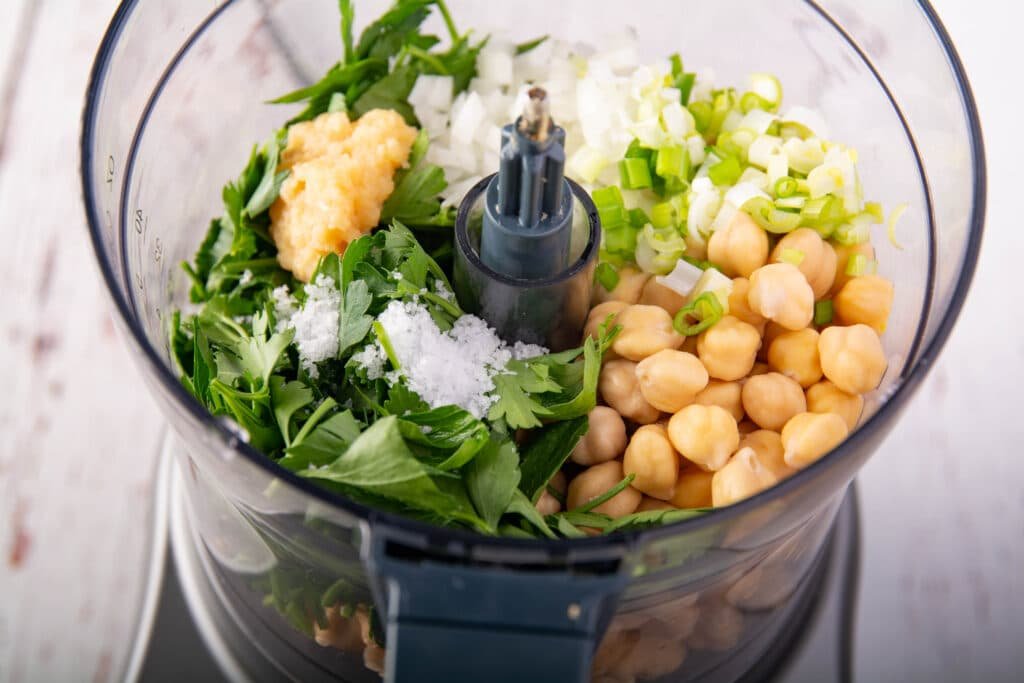
Add everything to a food processor.
I am pleased with this photo, but I hope no one notices that I forgot to put the blade in the food processor before putting the ingredients in.
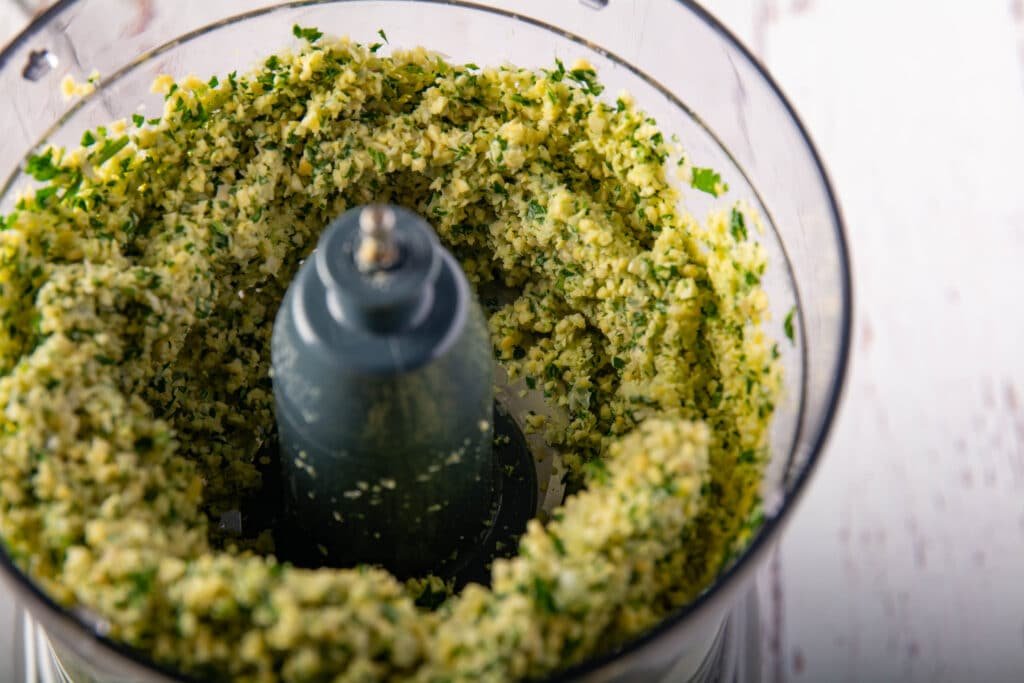
After adding your blade to the food processor, start to process into small pieces. You will know that your mixture is at the right consistency when the mix starts to climb up the processor’s wall. The first this happens, scrape the side of the bowl of a food processor to push everything back in. When it does this the second time, the mixture is now ready.
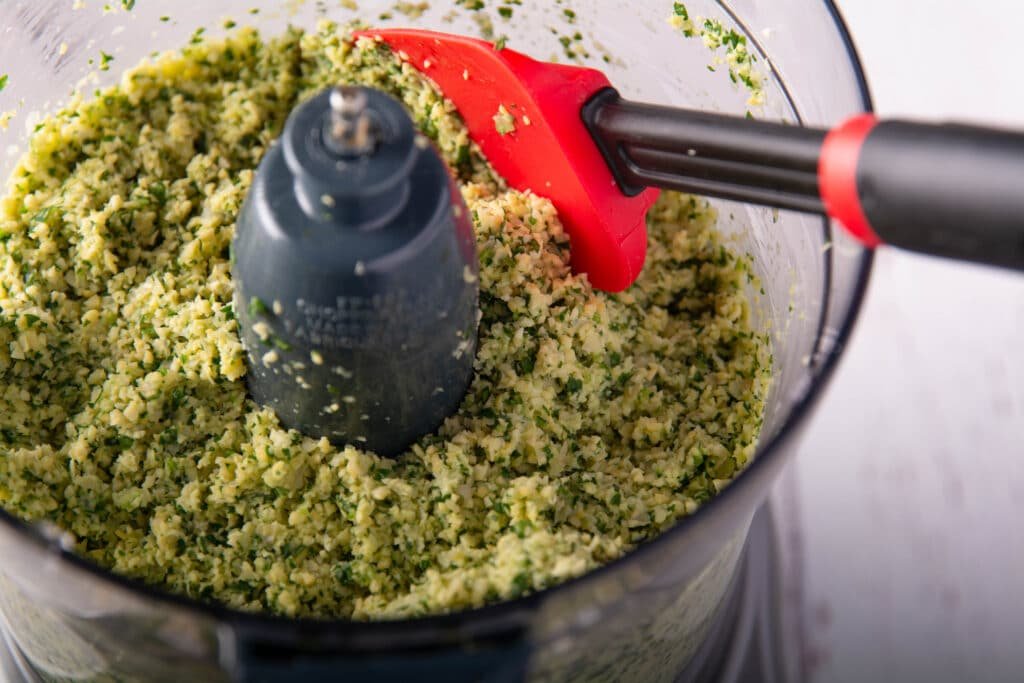
This is what my mixture looked like when I was done processing.
This makes a double batch; if you are not going to use it all, you can keep it in the refrigerator for a few days. Place it into a bowl, cover it with plastic wrap, and store it in the refrigerator for up to three days. If you need to store it longer than three days, place it into a plastic bag and freeze it.
If you freeze the falafel mixture in a flat layer it will defrost and be ready in less than one hour.
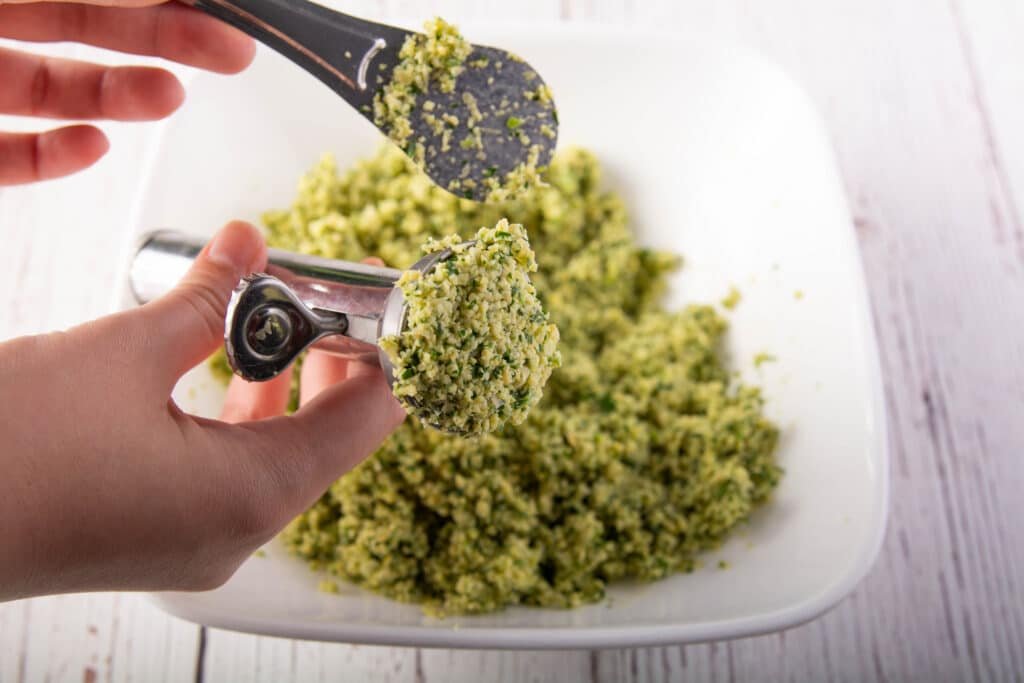
To deep-fry your falafel, add a few inches of neutral-flavored oil to a pot. But do not overfill your pot; the oil level should be a few inches below the top of the pot. When you add your mixture to the oil, it will start to bubble up and overflow your pot and start a fire.
For me, a wok is the perfect choice of vessel for deep frying. The shape means I need less oil to achieve the level that I need for deep frying. I also have a lot of room in the wok to allow for oil expansion. But still, keep a fire extinguisher close by.
You can also pan-fry your falafel by adding half an inch of oil to a pan. This will save a lot of oil, but it is harder to keep them from falling apart.
Using medium heat, heat the pan with your oil to 350F. A thermometer is great for know the oil temperature. The oil is now ready to cook your falafel.
To form your falafel, you can use a falafel scoop or just your hands. When using a scoop, I get nice small patties every time. This way, they look nice, and it helps to keep them from falling apart.
To make them with a scoop, press some of the falafel mixture into the scoop and scrape off the edges. My scoop came with a flat spoon that I use for scraping and pressing. After the falafel is formed over the hot oil, use the lever to gently push it out using the spoon to keep it from popping out and splashing hot oil.
Do not add too many at one time. You want the oil to stay close to 350F while frying. If the temperatures start to drop, raise the heat a little. Cook your falafel patties until they are golden brown on both sides.
If using your hands, it’s quite simple. Scoop up some of the mixture, and in the palm of your hands, push to form a ball. Then ease them into the hot oil. The big disadvantage of using your hands is everyone that I make gets bigger and bigger. Bigger falafel tends to fall apart. So keep them small.
When I tried forming my falafel ahead of time, they would fall apart as I tried to pick them up. So now I form them and drop them straight into the hot oil.
Why does falafel fall apart when cooking?
Traditionally falafel does not have any binder to hold it together. Then when exposed to moving hot oil and the steam coming out, it can fall apart.
After learning how to fry falafel successfully, I got the bright idea to make a burger-sized patty. When I was done frying the regular-sized falafel, I eased my burger patty into the oil. After a few seconds, it started to bubble, and things were looking good. Then I watched as it just broke apart into lots of tiny pieces.
The following is a list of tips to keep your falafel from falling apart during the first part of the cooking process. The patties need to hold together until a crust is formed on the outside. As soon as you get a crust, your safe from making tiny crunchy bits. (not that tiny crunchy bits are a bad thing)
Your falafel is too large. Start making them smaller. They will quickly form a crust and hold together. If they are too big, the inside’s weight will break your crust as it forms—thumbs up for a falafel scoop.
Start with dry ingredients. Before adding your ingredients to the food processor, they should be dry. Definitely wash your parsley and or cilantro. But then dry them between paper towels and let them air dry a bit before using. After soaking your chickpeas, drain them in a colander and then spread them out to air dry.
Under or over-processing your ingredients. If ingredients are still in big chunks, they will fall apart.
Using canned chickpeas. Canned chickpeas have been cooked and will act completely different than raw chickpeas. If you want to use canned chickpeas, you will need to use something as a binder.
The vegetable to chickpea ratio is wrong. Vegetables like parsley and onion are necessary to flavor the falafel and keep them moist. But they contain water that is released during the cooking process. When this is released, it causes a violent reaction that can break up your falafel. (the bubbles you see when frying are from this steam release). When the vegetables release steam, they also shrink, and this creates air gaps.
Oil temperature. If your oil is cold, they will soak up lots of oil, and then when the oil gets hot, they will break apart. Shoot for 350F. If your oil is too hot, you will quickly make lots of steam, and they will break apart.
Your falafels were not pressed tight (but not too tight). Or you formed them ahead of time. As you form them, ease them into 350F oil. If you make them ahead of time, the excess handling will break them apart. This works best as a two-person team. Teamwork is the key to success.
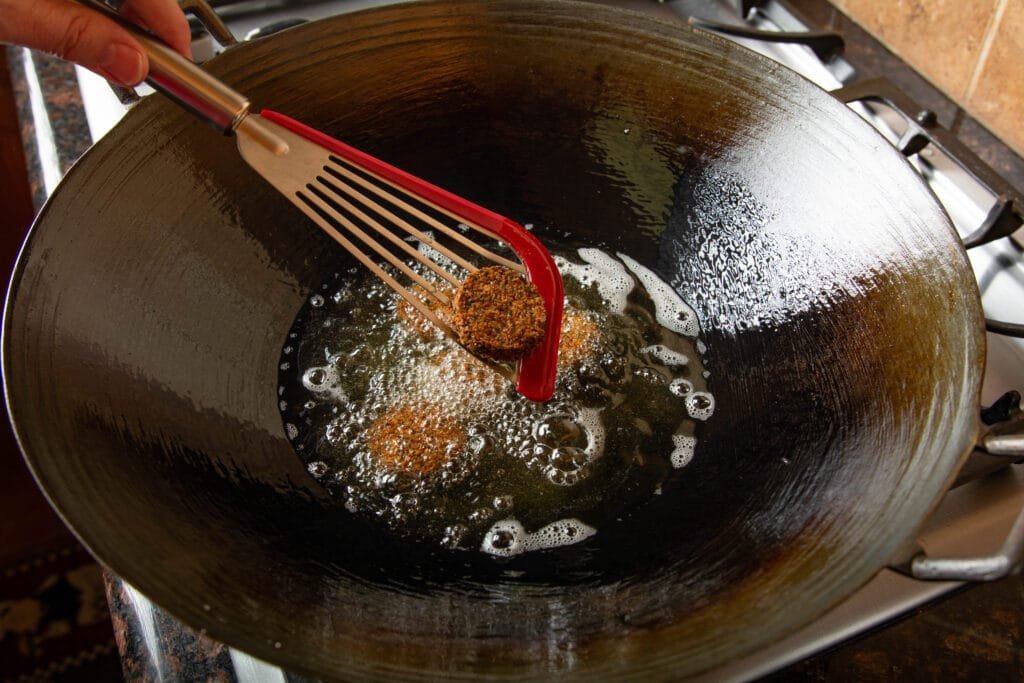
Making falafel is a team sport, one person forming the falafel and one cooking them. Make the falafel carefully ease into the oil. Start making another one. When it just starts to brown, the other person flips it over. After a few seconds on the other side, then remove them and place them on a rack so that excess oil can drip off. This way, you can fry several at a time.
If you try and do it yourself, you will constantly go back and forth between shaping and frying. They are small, so they cook quickly. It’s hard to keep up.

When you remove them from the oil, place them on a rack to cool and let the oil drip off.
I like to spread a little hummus inside a pita pocket, add my falafel and veggies with tahini sauce on the side. Another great way to serve falafel is on a salad. Experiment and find the best way that you like them.
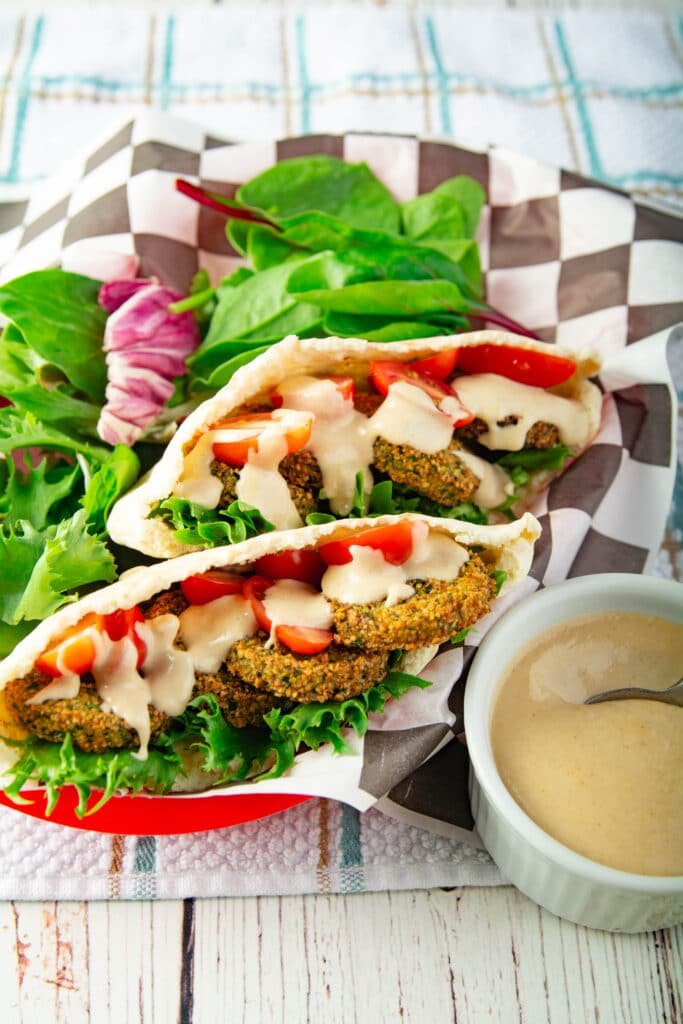
Can you reheat falafel? The answer is yes, you can. You can microwave them for a few seconds or reheat them in the oven. But the best way to reheat falafel is to fry them again for a few seconds. For this, bring your oil back up to temperature and fry them for a few seconds.
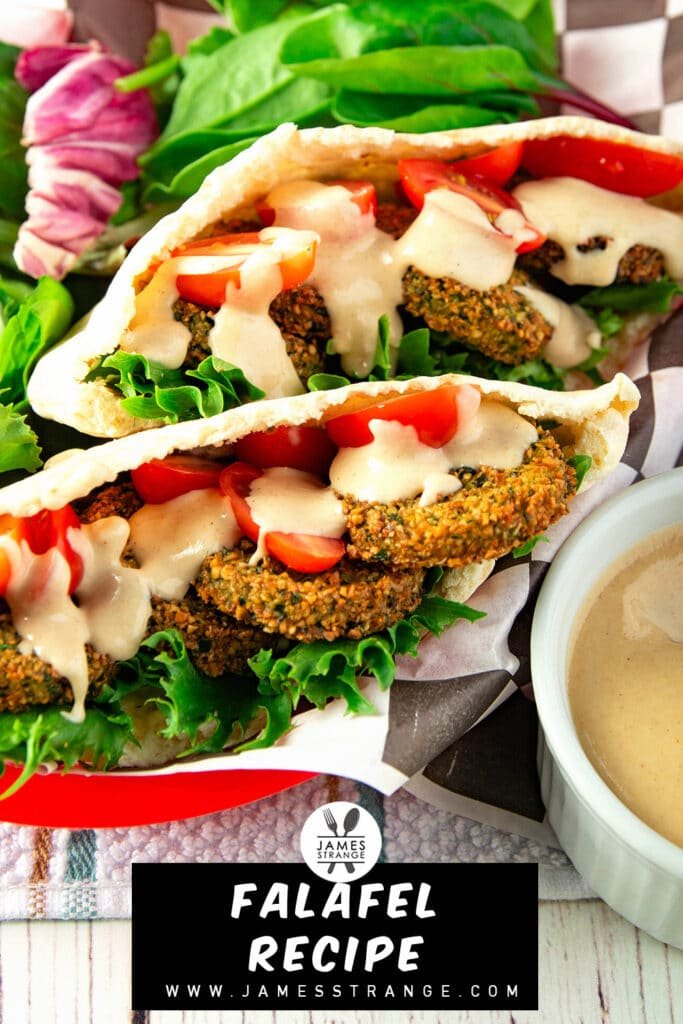
If you liked this recipe please share it with your friends.
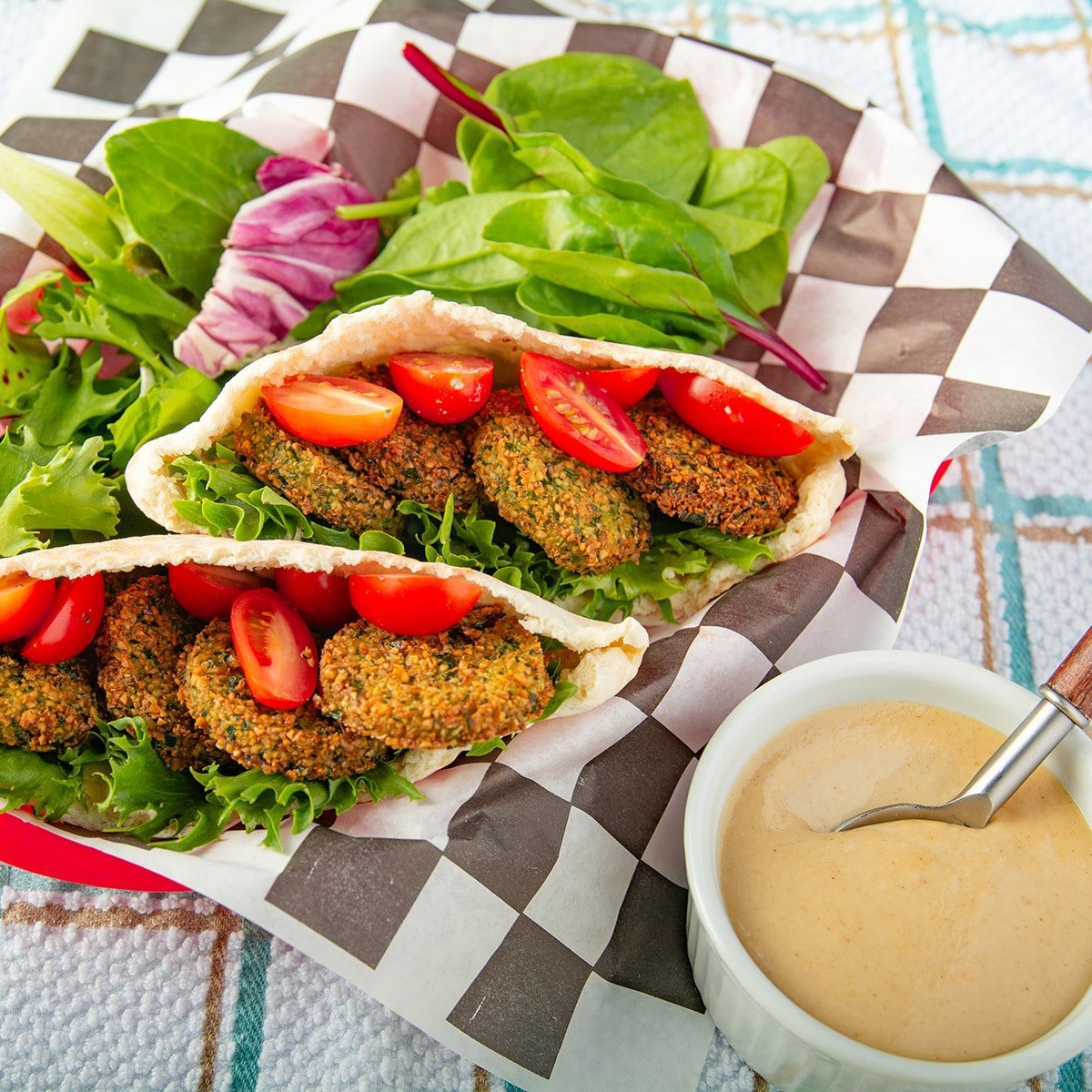
Ingredients
- 1 Cup Dried Chickpeas Soaked overnight
- 1 Cup Parsley Flat leaf / roughly chopped
- 1 Tablespoon Garlic Minced
- 1/4 Cup Onion Diced
- 1 teaspoon Salt
- 1 green onion minced
- 2 Cups Neutral flavored oil for frying
Instructions
- Cover the chickpeas and soak for at least 8 hours.
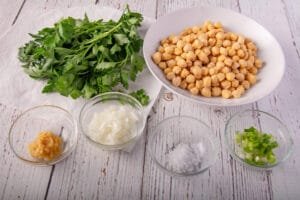
- To a food processor add all of the ingredients (except the oil) and process until everything is in small pieces.

- Form the falafel and ease into oil heated to 350F
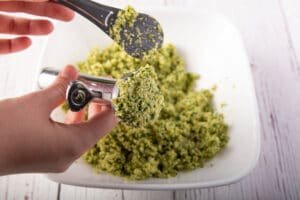
- When they start to brown flip them over and cook another 30 seconds.

- Remove from the oil and place onto a wire rack
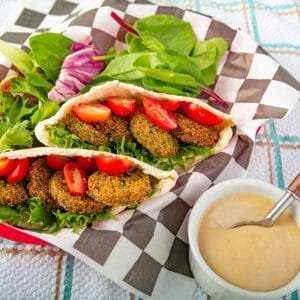

This was really simple to make and everyone loved it! Now that I know how to make these I’ll definitely be doing so again. Thanks for the great recipe!
This was so delicious in a pita with some tahini sauce. I love falafel and so does my husband. Thanks for the great tips! I’m glad I had a helper in the kitchen. 🙂
The best falafel we’ve ever had! Super tasty. Will make again!
These falafel are amazing! Your tips were spot on and these ended up better than those at my favorite restaurant!
Such a classic and easy dinner recipe! Thanks for the tip on the oil being too hot/cold, I had never even considered that!